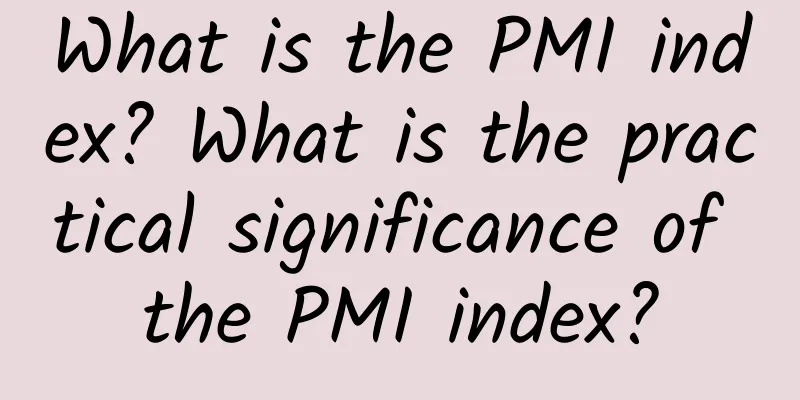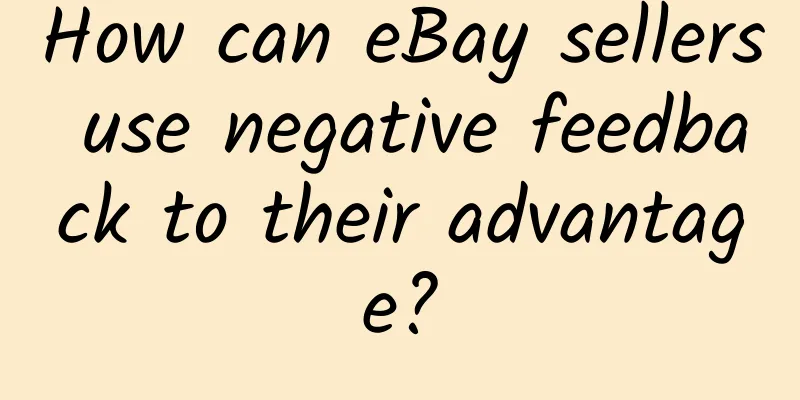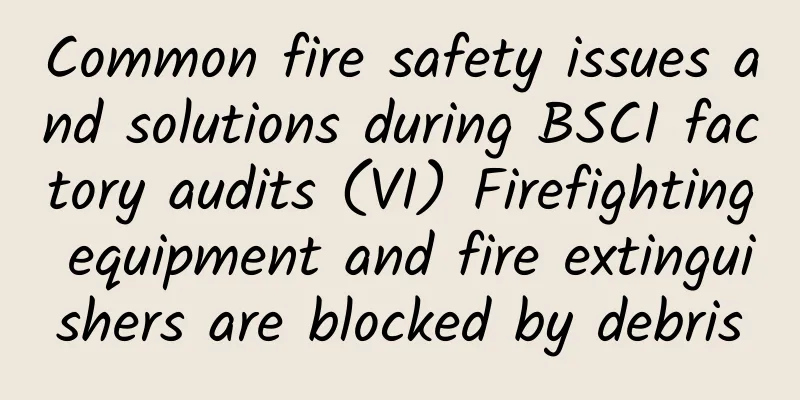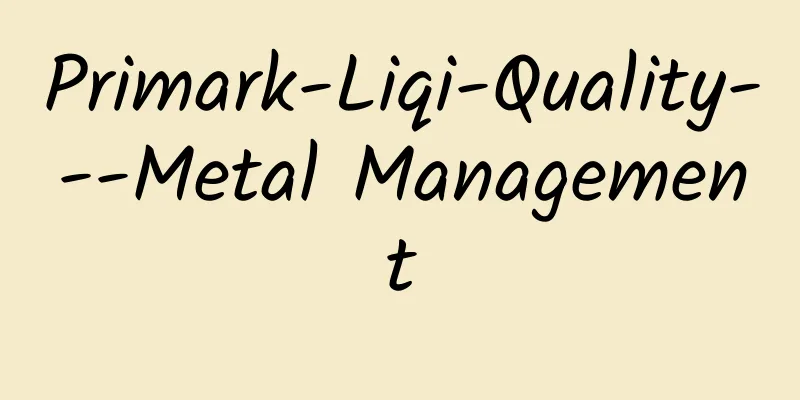What is the PMI index? What is the practical significance of the PMI index?

|
What is the PMI index? The full name of the PMI index in English is Purchasing Managers' Index, which means Purchasing Managers' Index in Chinese. It is an index compiled through monthly surveys of purchasing managers and can reflect the changing trends of the economy. Each PMI indicator reflects the reality of business activities, and the composite index reflects the overall growth or decline of the manufacturing or service industries. The survey adopts a non-quantitative questionnaire format, and respondents only need to make a qualitative judgment on each question, choosing one of the three answers: increase, unchanged, or decrease (compared to the previous month). The comprehensive summary of the PMI index is to count the percentages of various answers, and reflect the cyclical state of economic activities through the dynamic changes of each indicator. What is the practical significance of the PMI index? 1. PMI index determines economic trends The economic cycle is often linked to the PMI inventory cycle. Analyzing the PMI inventory sub-items is also of positive significance in judging the state of economic operation. In order to make the PMI data correspond better with the GDP data, the PMI data of the quarter is arithmetic averaged. By superimposing the sub-item inventory index with the GDP trend, it can be seen that: 1. The finished goods inventory sub-item lags behind the economic cycle. This is related to the fact that enterprises often arrange production according to the previous growth rate and passively reduce inventory when downstream demand deteriorates. At the same time, in the past two years, various industries in China have expanded rapidly under policy stimulus, and overcapacity is serious, resulting in a passive increase in finished product inventory during the economic downturn. 2. The raw material inventory sub-item is basically synchronized with the economic cycle. This is mainly because when the economy deteriorates, companies can reduce their inventory purchases of raw materials, but finished product inventories may continue to increase due to weak demand, and eventually be forced to destock; when the economy strengthens, companies can quickly increase their purchases of raw materials, that is, replenish inventory, to prepare for growing demand. 3. The "inventory index" after adding and averaging the raw material sub-item and the finished product sub-item in the same period reflects the overall inventory status of the society, and can be combined with the economic situation to analyze the overall inventory cycle. After superimposing the "inventory index" of the US manufacturing industry (arithmetic average of each inventory sub-item) from 1997 to the quarterly GDP year-on-year growth rate, it is found that the inventory index is a good synchronization indicator of the economic cycle. The raw material inventory sub-item of China's PMI is more synchronized with the GDP growth rate. Compared with GDP growth, the inventory index sub-item is slightly ahead of GDP growth when it grows, and slightly behind when it falls. 2. Application of PMI Index in Government Departments, Financial Institutions and Investment Companies 1. Predicting economic trends and turning points When analyzing business trends, its reliability is based on the prediction and analysis of data turning points (peaks and troughs, that is, the highs and lows in the business cycle). The PMI index is highly correlated with GDP, and its turning points often lead GDP by several months. 2. Analyze the information of industrial development changes Through PMI, we can first analyze the dominant industries. According to foreign experience, the total commercial procurement activities are mainly concentrated in a few industries, and the procurement operations also have similar concentration. These concentrated industries are: food industry, petroleum and related products, steel and related products, automobile industry, etc. The index of each industry of PMI can reflect the development trend of the industry and the changes in various indicators. Through the analysis of the dominant industries, it is more helpful to grasp the overall trend of the manufacturing or service industry. Secondly, the monthly PMI business report will list the catalog of products in short supply, price increases and price decreases, which will help to better understand and monitor the changes in various industries. 3. An important reference for determining investment direction. The capital market is changing rapidly. The most important thing is to find signs of economic turning points in a timely manner and make corresponding investment decisions. Due to the small amount of PMI data, the correlation between PMI and GDP is not as significant as expected, but the manufacturing PMI and industrial economic related indicators show a strong correlation, such as the change in the production volume index and the change in the growth rate of industrial output value, the change in the export order index and the change in the growth rate of industrial export delivery value, the change in the PMI composite index and the change in the growth rate of industrial added value, the change in the purchase price index and the change in the production material price index, the correlations are 0.771, 0.815, 0.735, and 0.788 respectively. 3. Enterprise Application Business operations are mainly arranged based on forecasts, and supply forecasts for raw materials and parts are sometimes more important than sales forecasts. 1. Supply forecasting is more helpful in predicting and controlling production, inventory and other costs; secondly, supply forecasting is the premise for avoiding stockouts. Through PMI, business operators can timely judge the industry supply and overall trends, so as to make better decisions. Specifically, corporate procurement decisions face three challenges: first, supporting the overall goals of the enterprise; second, playing the role of procurement and supply in corporate strategy; third, identifying special decisions. Second, PMI can also be used to judge the impact of the overall economic situation on the market. For example, a company in a fast-growing manufacturing industry needs to expand its production capacity. It can use temporary methods such as overtime or subcontracting, or permanent methods such as expanding the scale of fixed assets. At this time, the PMI composite index, production volume index, new order index and other data on the overall economic situation can be used to judge whether the growth of the industry will continue, so as to determine which decision to adopt. Third, PMI is also needed to predict economic trends when identifying specific purchasing decisions. For example, a manufacturing company needs to decide on a pricing strategy for a major raw material and consider whether to lock in a price in the long term or make a price commitment. Using the PMI price index and other price information (such as the U.S. federal government producer price index) can show price trends. If prices rise and the overall economic situation strengthens, a locked-in price strategy can be adopted; otherwise, short-term pricing is more appropriate. This is the end of the introduction to the PMI index in this issue. If you want to get more information about the PMI index, please pay attention and we will continue to answer your questions~ |
<<: ORC—Origin Surcharge Origin Receipt Fee
>>: How are the advertising fees for eBay Promoted Listings calculated?
Recommend
How is the AEO Division of China Certification and Inspection? What are the advantages of the AEO Division of China Certification and Inspection?
How about China Certification and Inspection AEO ...
BSCI factory audits found legal deductions from employee wages
1. If the employee causes economic losses to the ...
How to use Google AdWords tool? What are some good ways to use it?
Before we look at how to use Google AdWords, let’...
The only competitor Wal-Mart fears is COSTCO
Costco has never had a negative monthly sales gro...
Reasons for enterprises to implement ISO9000 family standards
What are the reasons for enterprises to implement...
sonar—mining Amazon real data
What is sonar? Sonar is a free Amazon keyword sea...
What is Joybuy? What are the common problems with Joybuy?
What is Joybuy? Joybuy.com, operated by Chinese e...
How is Wanyitong Overseas Warehouse? What are the advantages of Wanyitong Overseas Warehouse?
Finding an overseas warehouse logistics that is s...
The FSC certification system is widely used in the international market
Relevant experts suggest that in the future, loca...
SEDEX Glossary of Terms
A- level Member Refers to retailers and brand own...
Declaration of Implementation of the Obligations of the BSCI Code of Conduct
We, the undersigned, hereby confirm that: 1. We r...
OHSAS18001 Occupational Safety and Health Management System Emergency Plan and Response
OHSAS18001 Occupational Health and Safety Managem...
Pinkoi--Taiwan original design shopping website
What is Pinkoi? Pinkoi is from Taiwan and is Asia...
What is EMC certification? What are the EMC design measures?
What is EMC certification? EMC certification is t...
Determination of the validity of the CE certificate
For most electronic and electrical products, as l...









